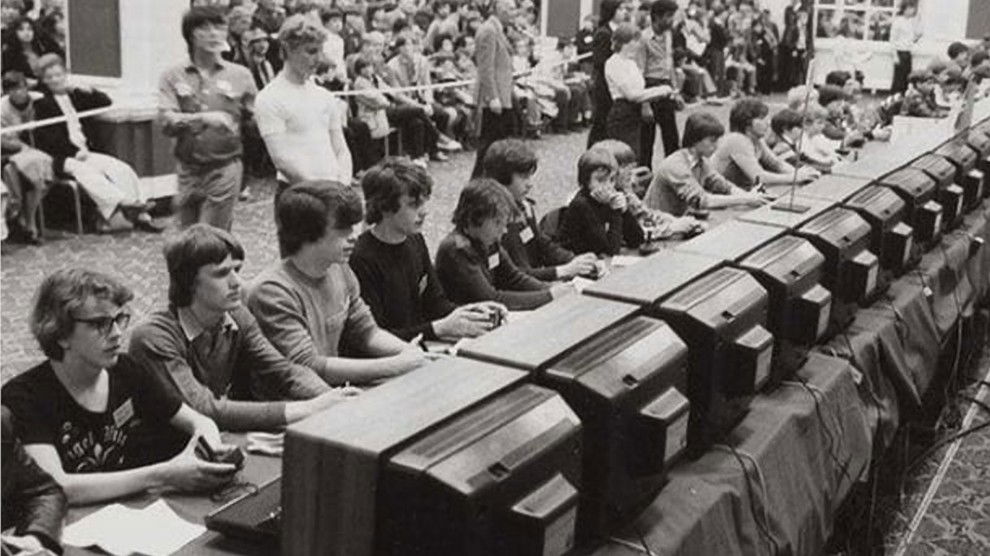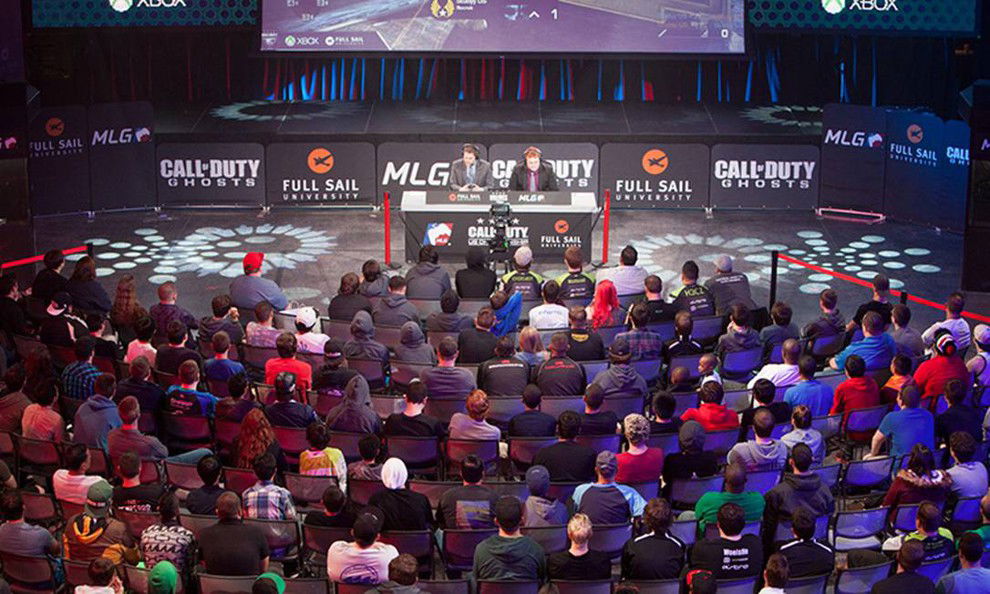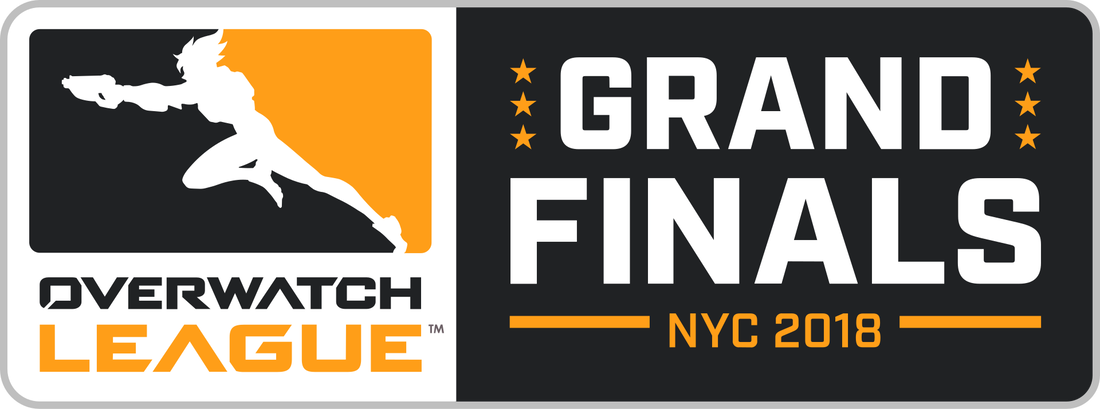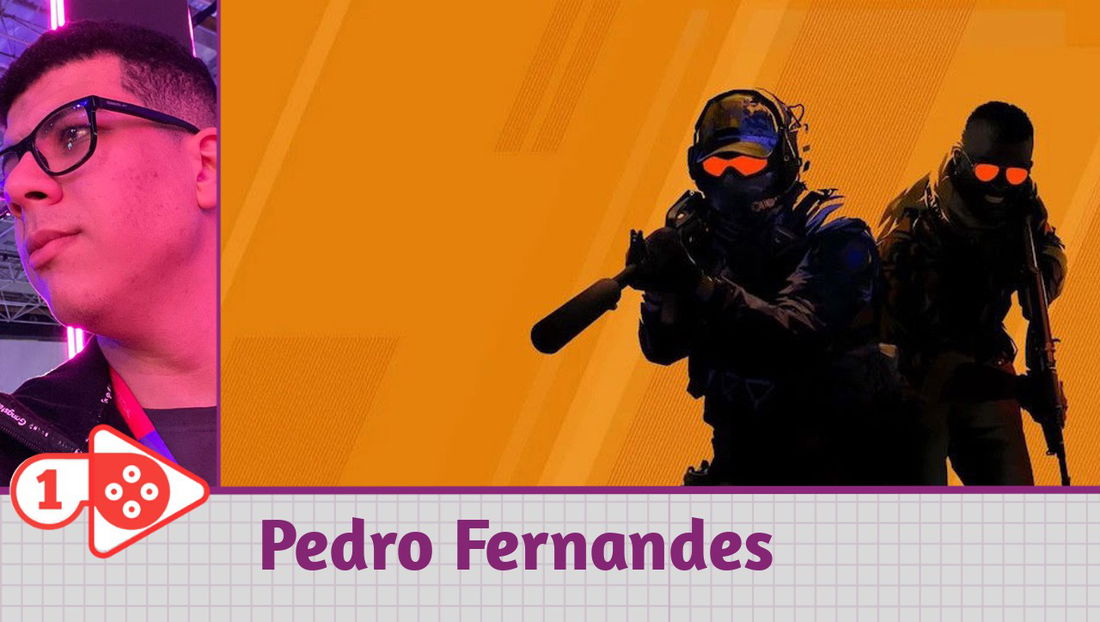The history of eSports, until reaching the current level of global industry, began in a much simpler way, in university tournaments and isolated events. There’s even a movie that shows a championship from the 80s called The Genius of Video Game and gives an idea of how things were back then.
Today, when we talk about video game competitions, it's easy to think of major championships taking place in soccer stadiums, broadcast to millions of people, with million-dollar prize pools and players treated like stars.
So, if you've ever wondered how it all began and how we got here, let's discuss the journey of eSports, from the first championships in the 1970s to the gigantic market that generates billions today. If you have any questions, leave a comment.
The First Tournaments
Way back in 1972, Stanford University in the United States organized a tournament called the "Intergalactic Spacewar Olympics". It was an event between students, who competed to see who could perform best at Spacewar, one of the pioneer electronic games. The prize wasn't money, but a subscription to Rolling Stone magazine, demonstrating that the focus was more on fun than career.

Eight years later, in 1980, Atari, which at the time dominated the market with its consoles and arcades, decided to invest in something bigger: it created the Space Invaders Championship. This tournament is considered the first major eSports event, as it brought together around 10,000 participants spread across the United States, an impressive number for the time and showing how it was already becoming a serious competition.
In 1990, the company launched the Nintendo World Championships, which toured several North American cities and had its grand final in California. The idea was to bring together players from different locations, testing their skills on popular Nintendo games.
It repeated the formula in 1994 with Nintendo PowerFest 94, which reinforced the idea that video game tournaments could draw crowds and become serious competitions. While these events were still isolated and concentrated in specific countries, they served as the foundation for what would come later.
In Brazil, video game championships were much simpler and almost always tied to promotional activities. Specialized magazines like Ação Games, SuperGamePower, and VideoGame organized competitions at technology fairs, events in shopping malls, and even in clubs, usually focusing on hits of the time like Street Fighter II, Mortal Kombat, and International Superstar Soccer.
It was also common for neighborhood video game stores to host weekend tournaments, attracting children and teenagers to play Top Gear, Mario Kart, or fighting games on 16-bit consoles. Even television got in on the act: popular TV shows pitted participants against each other in games from the 8- and 16-bit eras, as well as scavenger hunt-style quizzes.
The LAN house era and the expansion of the 90s and 2000s
The 1990s were marked by a significant shift: the popularization of PCs and, with them, LAN houses—places where you paid for a few hours of internet access. These were meeting places where teenagers and gaming enthusiasts played games like Ragnarok Online, Counter-Strike, and others. Many serious competitions were organized, albeit on a local scale, in these LAN houses. In Brazil, for example, LAN houses were fundamental to the growth of the competitive Counter-Strike scene.
Meanwhile, on the international stage, the advancement of the internet accelerated the process. In the early 2000s, there were still only a few major tournaments per year, but with the arrival of broadband, the distance barrier fell. What previously required the physical presence of competitors could now be done online, and the number of competitions skyrocketed. To give you an idea, in 2000, there were just over ten major international tournaments; ten years later, in 2010, that number had already surpassed 160.
It was during this period that some of the most important events in the world of eSports were born, such as the World Cyber Games (WCG), the Intel Extreme Masters, and Major League Gaming (MLG). In 2002, G7, the first international organization dedicated to eSports, also emerged, bringing together famous teams such as Fnatic from the United Kingdom, SK Gaming from Germany, and the Brazilian MIBR, which is still remembered for its Counter-Strike history.

The impact of the internet and streaming platforms
While LAN houses provided an initial boost, it was the internet that truly transformed eSports into a global phenomenon. Playing online became commonplace, and watching matches also became part of gamer culture. Video and streaming platforms forever changed the way audiences follow competitions.
Twitch is the best example of this. Created in 2011 from Justin.tv, the platform dedicated itself exclusively to gaming and quickly gained traction among players and fans. Today, it’s the largest gaming streaming platform in the world. In 2014, it was acquired by Amazon for nearly $1 billion, demonstrating the scale of the business. YouTube has also become central to the dissemination of eSports content. Not only live streams, but also recorded videos, analyses, and even memes have become part of the ecosystem.
This easy access has broken down any geographic barriers and helped popularize the championships. A fan in Brazil can watch the finals taking place in South Korea live, interacting with other viewers in real time. Reports indicate that YouTube viewers consume, on average, 8.5 hours of gaming videos per week, even more than they actually play.
Another important factor was the arrival of mobile gaming in the competitive landscape. Titles like Free Fire and PUBG Mobile have gathered a massive fan base, especially in regions where PCs and consoles weren't as accessible. In 2019, mobile games accounted for around 50 million hours of streaming, almost ten times more than the previous year. This growth demonstrates how eSports has adapted to different platforms and audiences, reaching connected young people worldwide.
Professionalization: leagues, teams, and big prizes
Starting in the 2010s, esports went from being just fun among friends to a professional business. Teams like Fnatic, Team Liquid, SK Gaming, and T1 began operating like traditional sports clubs, with contracted players, coaches, psychologists, physical trainers, and top-notch training centers. Players who previously dreamed only of standing out began receiving fixed salaries in addition to prize money.

As a result, official leagues emerged that follow models similar to traditional sports. The Overwatch League, for example, created in 2018, organized city-based teams, similar to basketball or soccer. The final of this league paid out over a million dollars to the winning team. Meanwhile, League of Legends leagues have established themselves in Korea (LCK), Europe, and North America (LEC and LCS), in addition to the global circuit that leads to the famous League Worlds. Valorant, a Riot Games game, also gained its own global competitive system, the VCT, while FIFA, Rainbow Six, and other titles maintain strong leagues followed by millions.
Prize pools have followed this growth. The most famous example is The International, the Dota 2 world championship organized by Valve. The 2021 edition broke records, with a total prize pool of $40 million, something unthinkable even for many traditional sports. The League of Legends World Championship also awards millions in prizes and attracts audiences that break livestream records. Another milestone was the 2019 Fortnite World Cup, which paid out $30 million, cementing Battle Royale as a respected competitive genre.
With so much money circulating, sponsorships have become an essential part of the ecosystem. Technology companies like Intel, NVIDIA, and Samsung, energy brands like Red Bull, and even car manufacturers have begun investing heavily in teams and events. It's estimated that sponsorship and advertising now account for more than half of all eSports revenue. Some companies have even created dedicated spaces, such as Newegg, which in 2025 opened the Newegg Gamer Zone at its headquarters, a space dedicated to events and training.
The current scene and the future
Today, eSports is a consolidated phenomenon. In 2024, the global audience reached approximately 611 million people, including both occasional fans and dedicated viewers. The majority of this audience is between 16 and 35 years old, demonstrating that it is a sector strongly linked to youth, although female participation is growing and already represents more than a third of the total audience.
The Asia-Pacific region accounts for the largest share of this market, with approximately 57% of viewers. China, South Korea, and Southeast Asian countries are true powerhouses, both in terms of audience, teams, and players. Europe and North America also have weight, together accounting for almost 30% of the audience. Global revenue in 2024 was approximately US$1.6 billion, with annual growth forecast above 15% in the coming years. Projections indicate that, by 2025, the United States is expected to surpass China in revenue, reaching more than US$1 billion.
Conclusion
In just over fifty years, video game tournaments have gone from modest university gatherings to packed arenas and broadcasts with millions of viewers. The factors behind this growth are clear: video streaming, which has brought audiences and players closer together; million-dollar sponsorships, which support teams and events; and the betting market, which is growing in parallel and already generates hundreds of millions. Furthermore, the presence of eSports at events like the Olympics, even if only for demonstration purposes, lends the sport greater legitimacy.
Today, eSports is more than a pastime: it is a global industry, generating billions, employing thousands of people, and attracting increasing attention from companies, governments, and the public. While its beginnings were modest, the future looks increasingly promising for those who live and breathe this world.











— Comentarios 0
, Reacciones 1
Se el primero en comentar